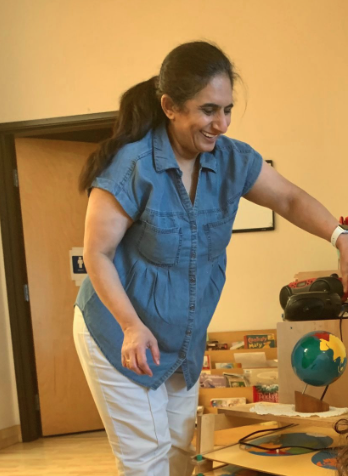Multi-age classrooms are something that many parents are curious about. You might wonder whether it is appropriate or if there are any advantages to mixing children of different ages in Montessori schools. Learning should be focused on the content and pace that a child is comfortable with, instead of automatically assuming that because two kids are the same age that they learn at the same speed or in the same way. There are many benefits of enrolling your child or children in a Montessori education program with multi-age classes, something public schooling likely doesn’t have, despite numerous advantages.
Learn At Their Own Pace
A multi-age classroom has more flexibility in creating curriculum. Students aren’t restricted to learning to pass a standardized test, which can create problems when significant differences exist. Someone’s age and corresponding grade don’t determine how fast or slow they learn, or what methods work best for them to grasp the concepts. It’s detrimental to push students forward who haven’t mastered the curriculum yet, or slow down the pace for someone who is more advanced. A custom approach creates a better learning experience and environment. Dan Condon who is the associate director at the Eagle Rock School & Professional Development Center located in Colorado states that high school is organized to suit staff and adult schedules, but doesn’t create an environment suitable for young people to learn and progress. His school offers education to students ranging from 15 to 21 who aren’t on the traditional track to graduating, allowing them to have an individualized learning experience.
Familiarity With The Classroom
Multi-age classes mean that students can stay with the same group of people, including their teacher, and form a close relationship with them. Children develop and begin to embrace learning opportunities. The environment is less like a traditional classroom and more comparable to a family environment with positive encouragement, teamwork, and genuine caring from teachers. It’s not a competitive environment that pits students against each other.
More Academic Opportunities
Academic opportunities for older children exist in mixed-age classrooms because they can utilize their skills to help younger children. The strategy benefits both students because the much younger children learn from their older peers, and the older children learn how to teach the concept. You cannot explain a concept if you don’t first master it yourself. Allowing older children to help guide younger ones gives them the opportunity to master their skills. Younger children don’t need to seek adult assistance, which reassures them and helps develop independence as they recognize their capabilities. Students from disadvantaged backgrounds or who have experienced gaps in their education can best benefit from the multi-age classroom setting.
Improved Self-Confidence
Students in multi-age classrooms develop more self-confidence than those who learn in an age-segregated class. Since their education is individualized, they aren’t concerned with keeping up with their peers. Every achievement is an accomplishment, and there’s something to be proud of as they advance in their curriculum. They can still be in the same environment as their friends, even if they aren’t on the same academic level at the end of the school year. Children are more likely to take advantage of their learning opportunities and look forward to learning instead of dreading school, like many children and teens experience today. Diane Friedlaender from the Stanford Center for Opportunity Policy in Education at Stanford, notes that the theory of multi-age classrooms took a hit when the No Child Left Behind era emerged. It created stricter, grade-level standards that teachers were required to adhere to. She also notes that students in extracurricular activities and sports group together with multiple grades and ages. The integration helps foster child development and the rigid adherence to a grade-specific structure harms learning opportunities.
Mentorship
Older students mentor younger ones in a classroom with children of mixed ages. The environment fosters cooperation and allows younger children to trust those who are older, leading to a more positive learning experience. Older children have opportunities to mentor students who are struggling in areas that they’ve mastered or those who they’ve developed a close connection to. Mentoring is a skill that you’ll use throughout your life, not just in school. These skills help prepare teens and older children for when they are out in the “real-world” and follow their passion to a career path.
Looking at the differences between a traditional classroom setting and Montessori schools that incorporate multi-age classrooms, it’s easy to see how your child can grow and advance in the environment. Teachers are skilled in the methods and know how to differentiate learning styles based on the individual. A Montessori school education prepares your child for real-life experiences, instead of focusing their learning and curriculum on how to pass a standardized test.
Learn more:

